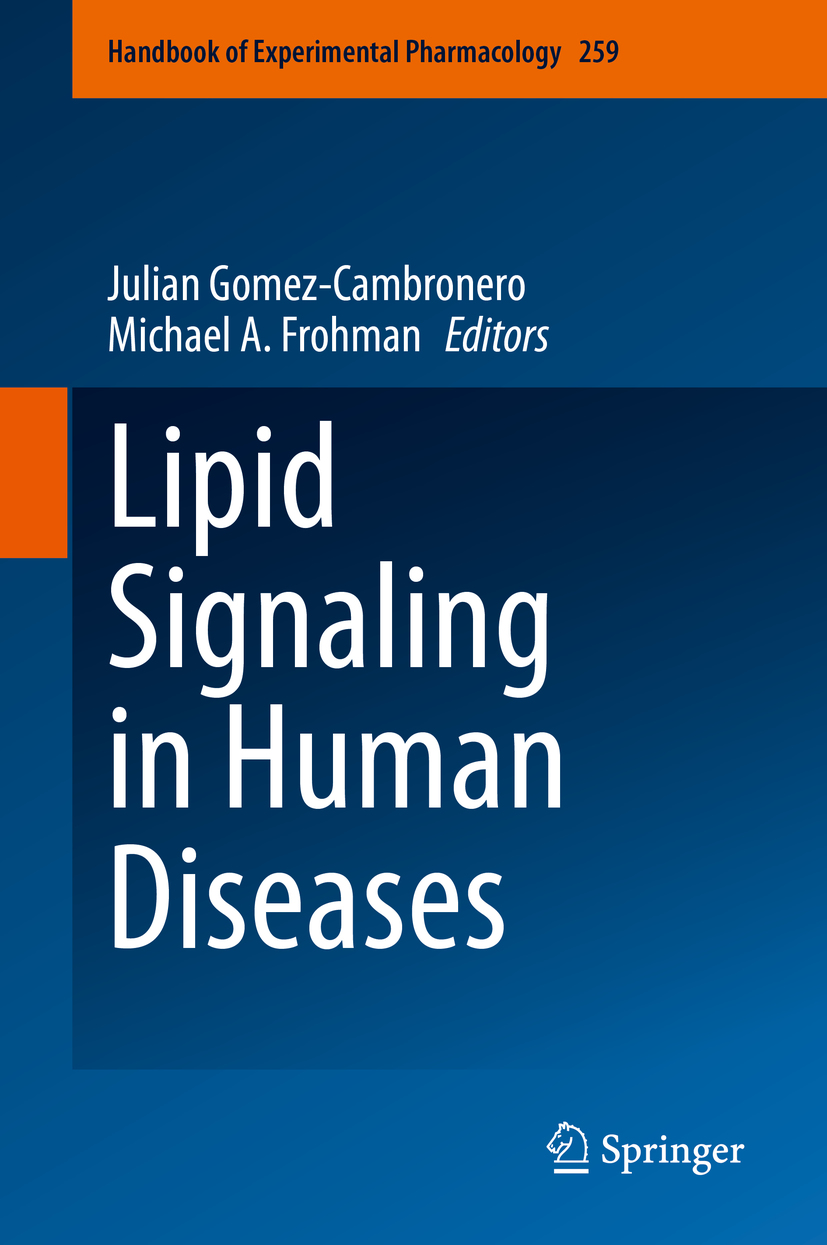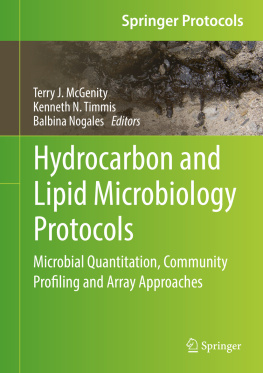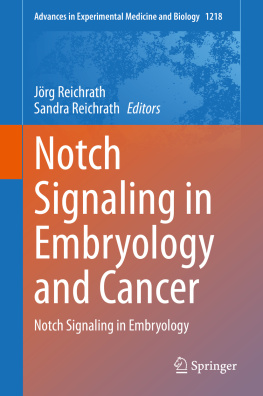Julian Gomez-Cambronero - Lipid Signaling in Human Diseases
Here you can read online Julian Gomez-Cambronero - Lipid Signaling in Human Diseases full text of the book (entire story) in english for free. Download pdf and epub, get meaning, cover and reviews about this ebook. year: 2020, publisher: Springer International Publishing, genre: Home and family. Description of the work, (preface) as well as reviews are available. Best literature library LitArk.com created for fans of good reading and offers a wide selection of genres:
Romance novel
Science fiction
Adventure
Detective
Science
History
Home and family
Prose
Art
Politics
Computer
Non-fiction
Religion
Business
Children
Humor
Choose a favorite category and find really read worthwhile books. Enjoy immersion in the world of imagination, feel the emotions of the characters or learn something new for yourself, make an fascinating discovery.
- Book:Lipid Signaling in Human Diseases
- Author:
- Publisher:Springer International Publishing
- Genre:
- Year:2020
- Rating:5 / 5
- Favourites:Add to favourites
- Your mark:
- 100
- 1
- 2
- 3
- 4
- 5
Lipid Signaling in Human Diseases: summary, description and annotation
We offer to read an annotation, description, summary or preface (depends on what the author of the book "Lipid Signaling in Human Diseases" wrote himself). If you haven't found the necessary information about the book — write in the comments, we will try to find it.
Lipid Signaling in Human Diseases — read online for free the complete book (whole text) full work
Below is the text of the book, divided by pages. System saving the place of the last page read, allows you to conveniently read the book "Lipid Signaling in Human Diseases" online for free, without having to search again every time where you left off. Put a bookmark, and you can go to the page where you finished reading at any time.
Font size:
Interval:
Bookmark:

TheHandbook of Experimental Pharmacologyis one of the most authoritative and influential book series in pharmacology. It provides critical and comprehensive discussions of the most significant areas of pharmacological research, written by leading international authorities. Each volume in the series represents the most informative and contemporary account of its subject available, making it an unrivalled reference source.
HEP is indexed in PubMed and Scopus.
More information about this series at http://www.springer.com/series/164

This Springer imprint is published by the registered company Springer Nature Switzerland AG.
The registered company address is: Gewerbestrasse 11, 6330 Cham, Switzerland
In memory of Dr. Julian Gomez-Cambronero
Lipid signaling, of the type covered in this HEP volume, has been a topic of investigation for upwards of three-quarters of a century, starting with early observations that acetylcholine stimulation of pancreatic slices in the presence of32P led to most of the radioactivity being incorporated into phosphatidic acid (PA) and phosphoinositides (PI), followed by the eventual discovery that elevation of intracellular calcium was triggered by PI bisphosphate hydrolysis. Many different types of lipids, lipid signals, mechanisms of coupling to receptors, and interaction with downstream effectors were subsequently uncovered, along with the families of genes responsible for signaling-activated lipid metabolism.
In this HEP volume, authors from across the field review their respective fields of expertise for what has become an enormous expanse of cell biology with profound impacts on normal and pathophysiology. Finally, under some circumstances, inhibition of some forms of lipid signaling is beneficial in the treatment of selected diseases; also discussed here is the status of small molecule therapeutics as modulators of cancer, thrombosis, autoimmunity, and neurological disease.
We start with sphingolipids, with a chapter from Dr. Sarah Spiegel in the Department of Biochemistry and Molecular Biology at Virginia Commonwealth University on the lipid sphingosine-1-phosphate (S1P) and its precursors, sphingosine and ceramide, and how their balance functions as a cellular rheostat that determines whether a cell survives or dies. S1P plays important roles in cancer (cell growth, inhibition of apoptosis, angiogenesis, and metastasis), the immune system (asthma, anaphylaxis, autoimmunity, sepsis, tissue rejection, and atherosclerosis), and development (fertility, vascular maturation, cardiac, and ear and brain development). S1P is formed inside cells by two sphingosine kinases, SphK1 and SphK2, which her lab cloned and characterized, and can be exported out by specific transporters to activate S1Ps receptors in autocrine and/or paracrine manners. S1P also has intracellular targets when produced by nuclear SphK2, binding to histone deacetylases and inhibiting their activity, thus linking S1P and sphingolipid metabolism in the nucleus to gene expression and epigenetic regulation. S1P is important in cytokine signaling and NF-B activation in inflammatory, anti-apoptotic, and immune processes.
Complementing this is a discussion by Dr. Yusuf Hannun, Director of the Stony Brook Cancer Center and Professor of Biochemistry and Cell Biology. Dr. Hannun discovered many of the bioactive sphingolipids and studied sphingolipid metabolism, structure, mechanisms, and roles in cell function. Neutral sphingomyelinase deficiency results in NiemannPick disease and is also involved in the regulation of cell migration and survival. His chapter delineates specific functions of individual pathways of sphingolipid metabolism, with a specific focus on sphingomyelinases and cancer biology and therapeutics. Finally, Professor Nigel Pyne at the Strathclyde Institute of Pharmacy and Biomedical Sciences in the UK reviews sphingosine kinases and isoform diversity, with special attention to inhibitors that are currently in preclinical studies for colon cancer.
Phospholipase D (PLD) lipid signaling through the production of PA first became of interest in the context of alternate ways of generating diacylglycerol kinase (DAG) via DAG kinases, as a means of activating protein kinase C. Subsequent observation of high levels of agonist-stimulated PLD activity in secretory cells and the identification of ARF-family GTPases as direct activators of PLD created excitement concerning the potential role of PLD in membrane vesicle trafficking and regulated exocytosis. Dr. Michael Frohmans research group at Stony Brook University cloned the mammalian PLD genes and was involved in the first studies of knockout PLD mice and PLD-specific inhibitors. He reviews here the use of PLD inhibitors to treat thrombotic disease and cancer progression, linking long-standing cell biological findings to human therapeutic opportunities. Another approach to PLD function is presented by Dr. Julian Gomez-Cambronero, the Brage Golding Distinguished Professor of Research and Professor of Biochemistry and Molecular Biology at Wright State University, on the roles of PLD in cell migration as related to cardiovascular repair after injury and cancer metastasis and the potential for use of PLD inhibitors in the clinic. Finally, Dr. Nicholas Vitale, at the Institute of Cellular and Integrative Neurosciences in Strasbourg, summarizes two decades of investigation into the role of PLD in regulated exocytosis in the central and peripheral nervous system in connection to neurodegenerative diseases and some forms of intellectual disability.
Font size:
Interval:
Bookmark:
Similar books «Lipid Signaling in Human Diseases»
Look at similar books to Lipid Signaling in Human Diseases. We have selected literature similar in name and meaning in the hope of providing readers with more options to find new, interesting, not yet read works.
Discussion, reviews of the book Lipid Signaling in Human Diseases and just readers' own opinions. Leave your comments, write what you think about the work, its meaning or the main characters. Specify what exactly you liked and what you didn't like, and why you think so.











